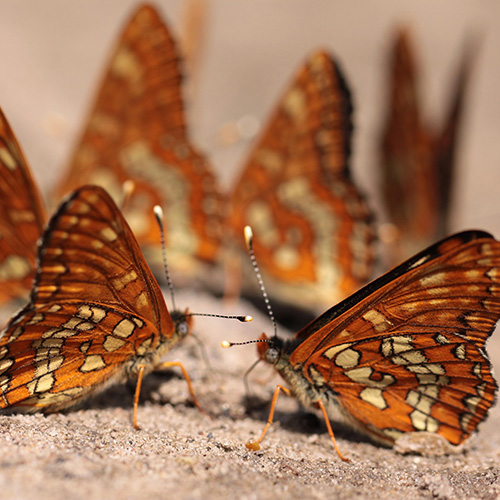
The Scarce Fritillary (Euphydryas maturna) is a butterfly species characteristic for riparian mixed forest edges. Even it is a Eurasian fauna member with wide distribution, its European populations having decreased significantly. The Scarce Fritillary has become extinct in several countries. In the Danube–Tisza Interfluve there are only a few populations.
The adult butterfly can be recognised easily: on the frontal part of its wings there is a dark brown or black and orange-red pattern, on the rear side of its wing a pale, sulphur or orange pattern can be seen.
This species has a complex life cycle: during the swarming period the female lays its eggs on the Hungarian Ash (Fraxinus angustifolia ssp. pannonica) or on the Wild Privet (Ligustrum vulgare). The caterpillars leave the caterpillar nest in the middle of the summer and they feed on herbaceous plants such as Veronica spicata. It overwinters in caterpillar form.
The Scarce Fritillary is threatened by several factors, e.g. intensive forest management which eliminates the shrubs on the edge of the forests, and the habitat loss due to the decrease of the groundwater level.
In Hungary, the Scarce Fritillary is a protected, red-list species. Within the EU it is considered as a Species of Community Interest. Thus, it serves as the basis of designation of Natura 2000 network.
